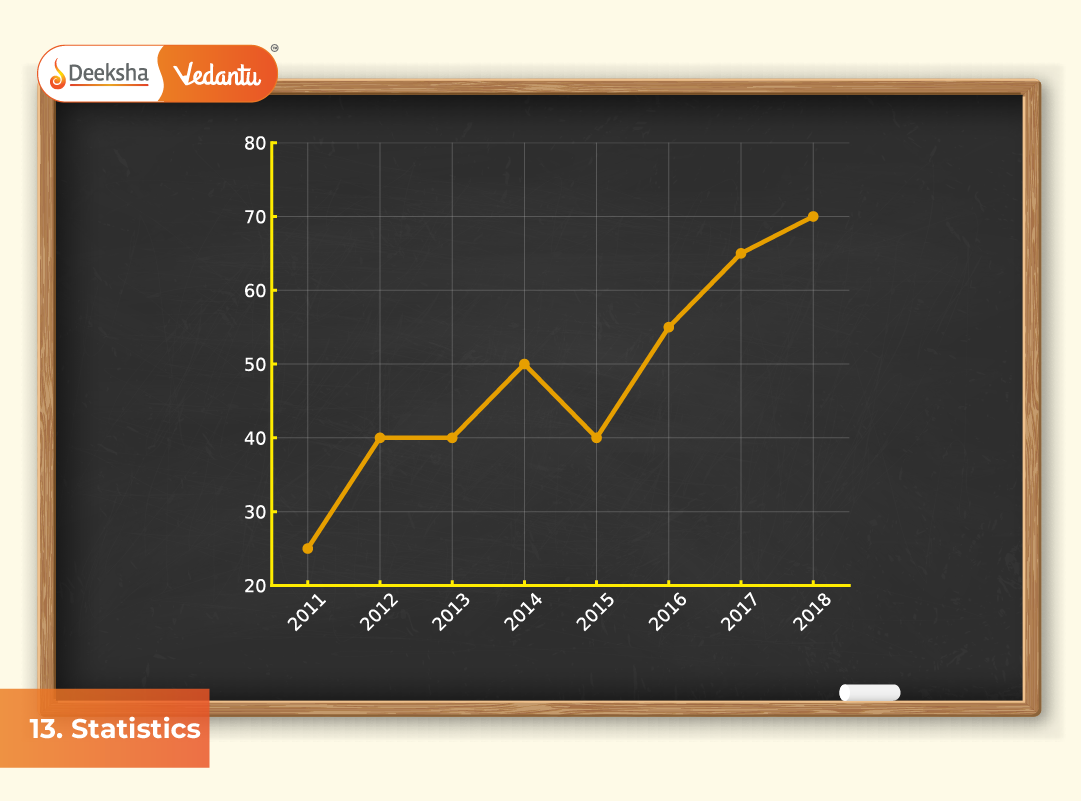
Statistics is an essential branch of mathematics that focuses on the systematic collection, organization, interpretation, analysis, and presentation of numerical data. It serves as a bridge between mathematics and real-world problem-solving, allowing students to extract meaningful insights from data and use them to make informed decisions. In the context of JEE, Statistics lays the groundwork for advanced topics such as Probability, Data Analysis, and various experimental or empirical models that appear in both Physics and Mathematics sections.
Understanding Statistics not only strengthens computational abilities but also builds logical reasoning skills. It helps students identify trends, compare datasets, and make predictions based on observed results. Questions from this chapter often focus on applying formulas efficiently, interpreting data patterns, and choosing the correct statistical measure based on the problem type.
Statistics is also used in physics experiments, economics, biology, and even machine learning-making it an interdisciplinary tool for analysis. For JEE aspirants, mastering this topic ensures they can handle questions involving both direct computation and analytical reasoning.
Marks Weightage in JEE
Statistics contributes approximately 4–6 marks in the JEE Main examination. While the weightage may vary slightly each year, questions generally revolve around basic statistical calculations such as mean, median, mode, and standard deviation. Occasionally, it also appears in combination with probability-based or data-interpretation problems. Since questions are usually numerical, accuracy and speed in applying formulas become key to scoring full marks.
For JEE Advanced, the topic may appear in analytical contexts where data interpretation or algebraic manipulation of statistical measures is tested. Hence, conceptual clarity is crucial.
Overview of the Chapter
This chapter offers a comprehensive understanding of how data can be organized, visualized, and analyzed using different mathematical tools. The major focus areas include data classification, graphical representation, and various measures of central tendency and dispersion. Below is a detailed breakdown of the subtopics.
Introduction to Statistics
This section defines statistics and its scope in various disciplines. It introduces key concepts such as data, frequency, class intervals, and variables (discrete and continuous). Students also learn the difference between raw and processed data and understand why summarizing data into interpretable forms is necessary.
Presentation of Data
This part focuses on methods of organizing and displaying data for better understanding:
- Ungrouped Data: Simple lists of observations without classification.
- Grouped Data: Data organized into classes and frequencies, making large datasets manageable.
- Frequency Distribution Tables: Used to show how often each data value occurs.
- Cumulative Frequency: Represents accumulated data over intervals and is used in percentile and median calculations.
Visual representation techniques such as histograms, frequency polygons, and ogives are also covered here, allowing learners to visualize trends and distributions effectively.
Measures of Central Tendency
Central tendency identifies the central or average point around which the data revolves. It provides a representative value of a dataset. The three primary measures are:
- Mean (Arithmetic Average): The most common measure, calculated as the sum of all observations divided by their number.
- Median: The value that separates the dataset into two equal halves.
- Mode: The value occurring most frequently in the dataset.
Different methods for computing these measures are explored for both grouped and ungrouped data, including Direct, Assumed Mean, and Step-Deviation Methods. Practical examples help students understand how to choose the appropriate method for faster computation.
Measures of Dispersion
Dispersion indicates the degree of variability or spread within a dataset. This section deals with how much the data deviates from its central value:
- Range: The difference between the highest and lowest observations.
- Mean Deviation: The average of absolute differences from the mean.
- Variance and Standard Deviation: These are advanced measures used to describe the spread of data quantitatively. The standard deviation is particularly important for JEE, as it appears frequently in exam problems.
Students also learn the relationship between variance and standard deviation (( \sigma = \sqrt{\text{Variance}} )) and how these concepts apply in real-life data situations.
Relation Between Mean, Median, and Mode
The chapter introduces an empirical relationship among these measures that helps in solving indirect questions:
[ \text{Mode} = 3 \times \text{Median} – 2 \times \text{Mean} ]
This formula is widely used in grouped data calculations and helps when one of the three measures is missing or difficult to compute directly.
Step-Deviation Method
This section highlights a simplified calculation technique useful for large numerical data or uniformly spaced class intervals. The step-deviation method reduces computational complexity by converting large values into manageable deviations from an assumed mean. It is frequently applied in JEE problems to save time without losing accuracy.
Applications of Statistics
Statistics finds broad applications in academic and real-world contexts:
- Interpreting experimental data in Physics and Chemistry.
- Studying population growth, market trends, or performance analysis in Economics.
- Supporting probability-based predictions and logical estimations in Mathematics.
- Helping in research design and hypothesis testing for scientific studies.
In JEE preparation, Statistics also sharpens problem-solving accuracy, as it trains students to deal with data-based reasoning tasks.
Important Formulas Summary
A comprehensive summary of key formulas is included for quick revision:
- Mean: ( \bar{x} = \frac{\sum f_i x_i}{\sum f_i} )
- Median for Grouped Data: ( l + \frac{\frac{N}{2} – CF}{f} \times h )
- Mode: ( l + \frac{(f_1 – f_0)}{2f_1 – f_0 – f_2} \times h )
- Variance: ( \sigma^2 = \frac{\sum f_i (x_i – \bar{x})^2}{\sum f_i} )
- Standard Deviation: ( \sigma = \sqrt{\text{Variance}} )
Each of these formulas is accompanied by practical examples in later subtopics to enhance conceptual understanding.
JEE-Oriented Problems and Tricks
This section compiles solved examples and problem-solving techniques tailored for competitive exams. Topics include:
- Shortcut methods for computing central tendencies.
- Quick identification of data symmetry and skewness.
- Error-checking techniques to avoid calculation mistakes.
- Pattern-based problem-solving strategies.
Students are encouraged to solve multiple-choice and numerical-type problems from past JEE papers to strengthen familiarity with question patterns.
Conclusion
The study of Statistics enhances logical thinking and analytical interpretation skills-both vital for success in JEE and beyond. It provides mathematical tools to summarize data, identify trends, and quantify uncertainty. JEE aspirants should focus on understanding the meaning behind formulas, not just memorizing them, and practice problems involving real-world contexts.






Get Social